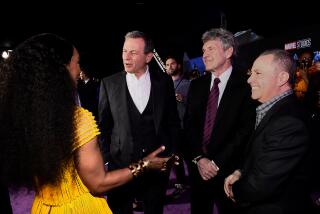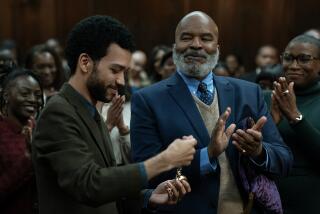A View That’s Not Cartoonish : ‘Pocahontas’ plants a seed of tolerance with the notion that different doesn’t mean necessarily mean bad, or even lesser.
- Share via
Former Education Secretary William Bennett and others who are strong proponents of the cultural superiority of Dead White Guys (less irreverently referred to as icons of Western Civilization) probably will not be pleased with Disney’s latest animated feature, Pocahontas--but I was.
I was one of those contrary little kids who watched westerns and rooted for the Indians. My child’s sense of justice firmly believed that the natives were there first, and the settlers’ troubles with them came from the fact that they didn’t exhibit the proper respect that should always be displayed when you’re stepping onto someone else’s playground. (Why they were surprised at Indian rage was a constant mystery: everybody in elementary school knew the protocol for visiting alien turf.) I simmered at the presumption of the characters played by John Wayne and Ronald Reagan, men who strode boldly forth, assured of their divine right to do things their way on what amounted to other people’s property.
So Disney’s insistence on telling the oft-told Jamestown fable from two sides is welcome. And considering American cinema’s traditional treatment of our native peoples, long overdue. In this version, for instance, the English settlers’ assumption that they were bringing civilization to the primitives is balanced by the natives’ horror at the English’s wasteful, way with the land and its resources. Each loftily assesses the other as “...savages, barely even human!”
To be sure, there are complaints that can be made about the movie. Native people will probably sniff at the pneumatic babe with swinging tresses the Disney machine chose to portray the Pocahontas, but she is, undeniably, beautiful. And, despite the fact that from most historical accounts, natives and Europeans found each other’s physical appearance odd or even repulsive Disney’s John Smith and Pocahontas found each other compellingly attractive. And through the love story that, in reality, never was, the movie manages to offer a lesson on the value of tolerating other people’s cultures.
Sure, Pocahontas is a little sugary, a kind of Technicolor “can’t we all get along?,” and the lessons it teaches are not the primary purpose of the film. But if you can start teaching racial tolerance in painless ways to small children, if it’s absorbed right along with the sing-alongs and the marketing junk (maybe there’s hope for us yet. Just as in “West Side Story,” a musical to which “Pocahontas” owes much, Disney’s version of Jets (the English) and Sharks (the Indians) put down their weapons in the end and regard each other as human beings with something in common. Maybe the movie will manage to plant a seed of tolerance in the memories of children who leave the theater humming its tunes.
Maybe that little seed will grow, if watered regularly enough by adults who can encourage the children around them to consider that “different” doesn’t always mean “evil” or “lesser.” (Hey Disney--here’s a hint for your next feature-length cartoon: How about an animated, urban “Romeo and Juliet,” with the Capulets black and the Montagues Korean set in Los Angeles, near Olympic and Crenshaw.)
The words of Chief Pohowtan, Pocahontas’ father, should be engraved above the archway of every public school and building: “If there is going to be fighting, it shall not begin with me.” A sentiment to which even the pugnadious Bennet could subscribe.
More to Read
Only good movies
Get the Indie Focus newsletter, Mark Olsen's weekly guide to the world of cinema.
You may occasionally receive promotional content from the Los Angeles Times.









